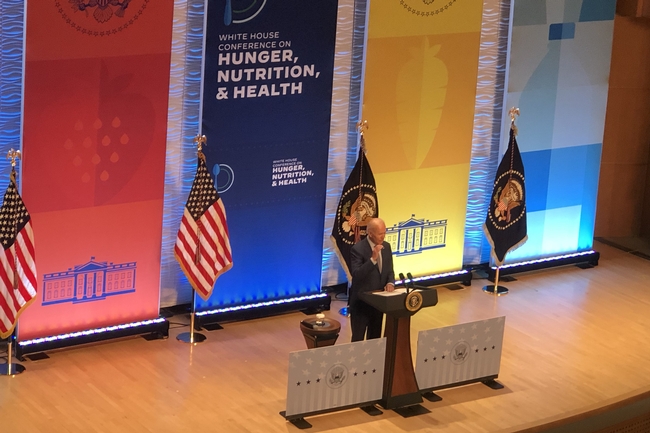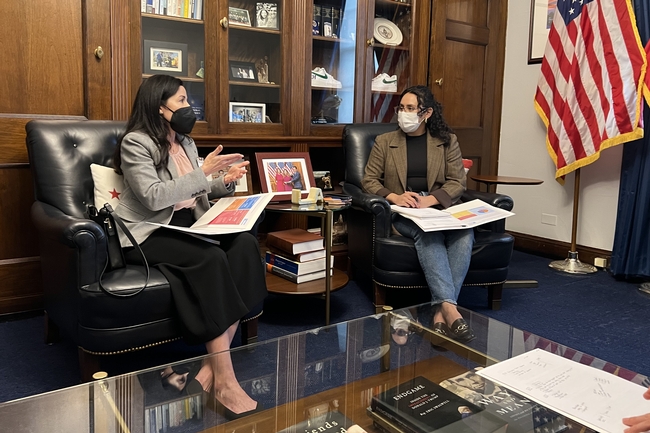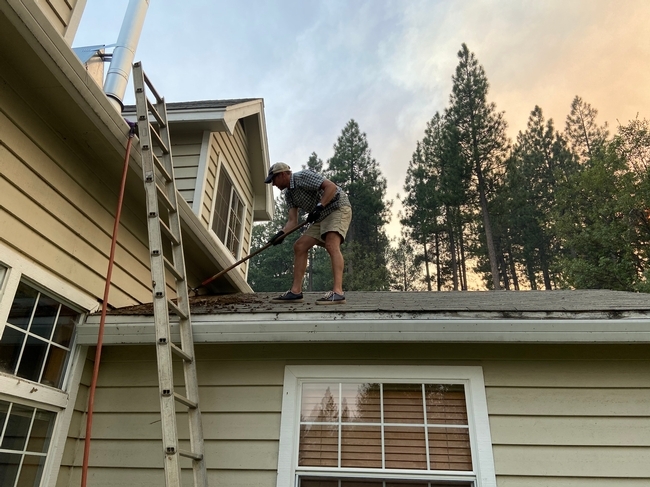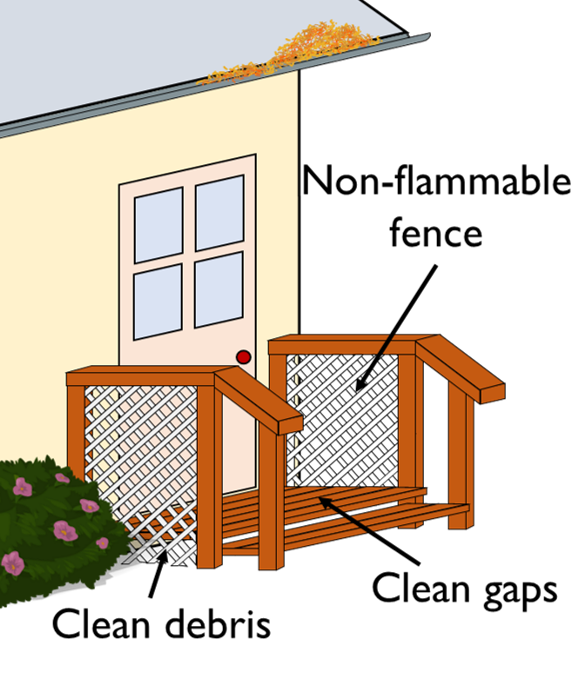Posts Tagged: house
Nutrition Policy Institute work underpins historic White House conference
Researchers contribute recommendations for national strategy on hunger, nutrition, health
At the first White House Conference on Hunger, Nutrition and Health convened since 1969, President Biden announced on Sept. 28 a national strategy “to end hunger in America and increase healthy eating and physical activity by 2030 so fewer Americans experience diet-related diseases.” Much of the foundational research undergirding the strategy has been informed in part by the Nutrition Policy Institute, a program of UC Agriculture and Natural Resources.
“Science is the work of many – and no one study answers all the questions – but we have a tremendous body of work that has contributed to this conference, building from all the programs and changes that were made from the last conference,” said NPI director Lorrene Ritchie.
The original Nixon-era conference produced about 1,800 recommendations – and 1,600 were eventually implemented in the subsequent years, according to Stacy Dean, U.S. Department of Agriculture Deputy Under Secretary for Food, Nutrition and Consumer Services.
A litany of far-reaching programs grew from or were propelled by the 1969 conference: the School Breakfast Program, WIC (the Special Supplemental Nutrition Program for Women, Infants and Children), SNAP (the Supplemental Nutrition Assistance Program)-Ed and CalFresh Healthy Living UC, the Expanded Food and Nutrition Education Program, and more.
This history illustrates the potential for sweeping change from this 2022 conference – which gathered about 500 experts and advocates (with 1,000 more participating online) – and from the national strategy that represents the Biden-Harris administration's “playbook.”
“Does that document have everything in it that we would like? No – but, oh my goodness, if we could accomplish all the things that they've laid out, what a transformational impact it would have,” said Ritchie, adding that she was thrilled that the highest levels of government are prioritizing hunger and nutrition-related chronic disease.
Including beverages in the conversation
In the course of gathering ideas and input from across the country, conference organizers asked Christina Hecht, NPI senior policy advisor, to author and submit NPI recommendations on encouraging the public to choose water instead of sugary drinks. Those suggestions – which range from including water in the “MyPlate” dietary guideline graphic to ensuring that every public school has a water bottle-filling station – crystallized extensive, rigorous scholarship by a broad community.
“NPI's recommendations were built on lots of work by many water researchers and advocates over the years; they're based on many years of thinking by many people,” Hecht said.
Christina and Ken Hecht, NPI policy director, also submitted recommendations as part of the Sugar-Sweetened Beverage Reduction Workgroup, which brings together experts from national, state and local organizations. Several of their key proposals, such as targeting the marketing of sugary drinks and clarifying front-of-package nutrition labels, appear as recommended steps in the national strategy document.
Other nutrition policy changes compiled by Christina Hecht – like updating the Federal Food Service Guidelines used on federal properties and in federal programs – are also reflected in the national strategy, albeit without specifically mentioning sugary drinks. Nonetheless, Hecht believes doors have been opened for future discussions that could incorporate and promote healthy beverages.
“What those doors require are continuing to develop the evidence base, continuing to translate and share the evidence base, and continuing the advocacy to bring that evidence base to the attention of decision makers,” she said.
University of California setting an example
Suzanna Martinez, an NPI-affiliated researcher who attended the White House conference, said she hopes the convening generates momentum for two bills before Congress that would help alleviate food insecurity in higher education: one that provides funding for campuses to address students' basic needs, and another that reduces barriers to SNAP (Supplemental Nutrition Assistance Program, formerly known as food stamps). The national strategy document explicitly acknowledges that “SNAP's college student eligibility restrictions are out of date given the current population who seek higher education credentials.”
Martinez, an associate professor in the Department of Epidemiology and Biostatistics at University of California San Francisco, was invited to the conference because she's part of a group driving the UC's effort to halve the number of students facing food insecurity across the system by 2030. That commitment, and UC Berkeley's work on basic needs, were highlighted by Second Gentleman Douglas Emhoff during the closing plenary session.
“The work that we're doing here in California tends to set the stage for what happens in other states,” said Martinez, who also cited California's pioneering effort to provide meals for all public school students.
NPI's ongoing work evaluating universal school meals in California and other states is just one example of how its academics and staff are refining innovative programs so they can be adopted more effectively and broadly (perhaps nationally). In fact, the White House identified “healthy school meals for all” as the top strategy for improving food access and affordability, and Ritchie applauds the administration's consistent emphasis on early interventions for healthier outcomes.
“The earlier you can create healthy habits – meaning in utero all the way through childhood – the more likely you are going to have adults who don't end up with nutrition-related chronic diseases,” she explained. “The last thing you want to do is to wait until people are really sick before they start to change their habits.”
Another overarching theme that excites Ritchie is the national strategy's “whole of government” approach to addressing a host of nutrition and hunger issues. One example is how the strategy calls for agencies not traditionally associated with food to contribute to reducing waste, such as the Department of the Treasury clarifying tax benefits for businesses that donate food.
“Throughout the document, over and over again, there are countless examples of creating synergies across government agencies and with local and state governments that can help move the needle,” Ritchie said. “It's just this kind of bold call to action that we really need.”
Five things you can do this weekend to help protect your home from wildfire
Despite recent rains, fire remains a danger across California, as there's still plenty of time this fall for grass, woody debris and other flammable material to become dry and ignite.
“The smaller the fuels – pine needles, grass, and small twigs – the faster they can dry out, meaning they will be ready to burn again a few days or weeks after a large rainstorm,” said Susie Kocher, a UC Cooperative Extension forestry and natural resources advisor for the Central Sierra, urging residents to take steps to prevent or limit potential fire damage.
When it comes to “home hardening” and essential wildfire preparations in this age of drought and climate change, not every project requires a bank-breaking budget and an army of contractors.
There are small – but significant – home and landscaping improvements that most people can complete by themselves during a single weekend, with a quick run to the hardware store and some basic planning and safety precautions.
“There are a lot of factors that play into your home's vulnerability to ignition; small changes and upgrades can help reduce some of that risk for people living in high wildfire risk areas,” Kocher explained. “The bigger projects like replacing windows and roofs are very important, but there are definitely smaller projects that people can tackle right away at lower cost that also reduce risk. The main goal of these actions is to reduce the risk that wildfire embers can ignite your home.”
Kocher recommends these five measures as simple but crucial ways to bolster your home's wildfire resiliency.
Clean debris from your roof. Because of its expansive surface, the roof is the most susceptible area of your house to embers. Removing accumulated leaves and needles is especially important if you have a “complex roof” with dormers or other elements – that's where embers gather, too, and could come in contact with flammable siding. (And while you're up there, give those gutters a good swabbing.) Learn more about protecting your roof and gutters.
Install metal flashing in vulnerable spots. Replacing all your siding with noncombustible material can be pricey, but a more manageable task would be adding corrosion-resistant metal flashing to select areas: roof-to-wall intersections, the place where the chimney comes out of the roof, and the edge where the deck meets the house. Learn other ways to shore up your siding.
Remove debris from between the boards of your deck and fence. Embers can ignite leaves and needles stuck between the boards, so be sure to keep those gaps clean and clear. Learn additional steps to harden your deck and prepare your fence.
Take out all vegetation (alive or dead) within five feet of your home. Creating defensible space immediately next to your home is a top priority, so be sure there's nothing combustible within this “Zone Zero.” Plants, mulch, woodpiles, wicker furniture or anything that can catch fire should be removed. Learn what to do in the other “zones” as you move farther from your home.
Inspect vents and upgrade to finer mesh screens. Install or swap in noncombustible, corrosion-resistant metal mesh screening that is at least 1/8” (1/16” would be even better but requires more frequent maintenance). These screens help prevent embers from entering your attic and crawl space. In addition, put together some vent covers that can be deployed if you have time before a wildfire arrives. Learn other ways to reduce vulnerability of vents.
For more in-depth explanations and next steps, Kocher suggests visiting the UC ANR wildfire website (https://ucanr.edu/sites/fire/Prepare) and reviewing this home retrofit guide (https://bit.ly/3RaL54u).






